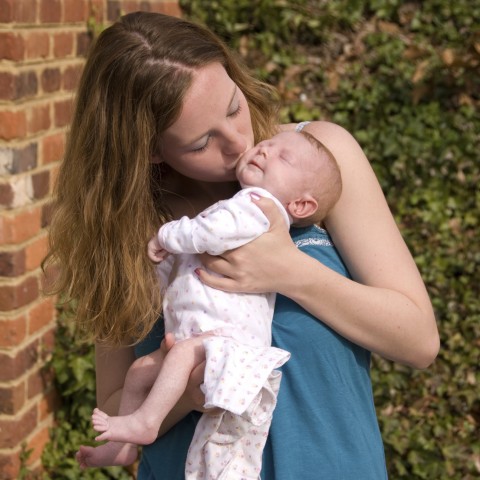
Pronouns are essential in any language. All languages have pronouns, in some way or another, though some might not have as many as others. We use pronouns all the time, so not understanding them would mean missing a big part of the conversation.
They simplify the language and make it possible for us not to repeat ourselves all the time. Sentences would be so much longer if we didn’t use pronouns or some other way of indicating what you’re talking about without constant repetition.
There are many different kinds of Spanish pronouns, including indirect and direct object pronouns in Spanish, and we’re going to take a look at all of them. If you don’t feel like reading the entire article, you can always look at our list of the Most Useful Spanish Pronouns, even though you’re obviously not going to get as much information.
 Table of Contents
Table of Contents
- Personal Pronouns
- Demonstrative Pronouns
- Interrogative Pronouns
- Indefinite Pronouns
- Spanish Relative Pronouns
- How SpanishPod101.com Can Help You Learn More Spanish
1. Personal Pronouns

a) Spanish Subject Pronouns
Let’s begin with something simple: Spanish personal subject pronouns. All languages have subjects, which according to the Cambridge English Dictionary, consist of “the person or thing that performs the action of the verb or is joined to a description by a verb.” In English, these are “I,” you,” etc. In Spanish, we have a few more different subject pronouns than in English. This is because the words for “we” and plural “you” have both a masculine and a feminine form.
We also have another pronoun for when we want to speak more formally, or when we’re talking to an important person. Nowadays, it’s not very common in Spain, though! That’s why we’re only including it in this first section. In any other section, the pronouns used for the formal “you” are the same as the pronouns for the third person.
One more thing that you need to keep in mind is that in Spanish, the subject is often omitted unless the person we’re talking to doesn’t know who we’re talking about or we want to emphasize it. This is because the verb changes depending on the person, so it already tells who the person is. We’re going to include the subject on all of the following examples, but keep in mind that you won’t usually need to use them.
- Yo (“I”)
Yo tengo un hermano.
“I have a brother.”
- Tú (“you”)
Tú tienes un hermano.
“You have a brother.”
- Usted (formal “you”)
Usted tiene un hermano.
“You have a brother.”
- Él / ella (“he” / “she”)
Ella tiene un hermano.
“She has a brother.”
- Nosotros / nosotras (“we”)
Nosotros tenemos un hermano.
“We have a brother.”
- Vosotros / vosotras (“you”)
Vosotros tenéis un hermano.
“You have a brother.”
- Ustedes (formal “you”)
Ustedes tienen un hermano.
“You have a brother.”
- Ellos / ellas (“they”)
Ellos tienen un hermano.
“They have a brother.”

b) Spanish Direct Object Pronouns
An object is something or someone that’s affected by the action of the verb. So, for example, in the sentence Juan tira la pelota (“Juan throws the ball”), la pelota (“the ball”) is the object. This object can be substituted for a pronoun, if what you’re talking about is already known. If you wanted to substitute the object in that sentence for a pronoun, the sentence would become Juan la tira (“Juan throws it“).
Look at the Spanish pronoun’s placement in the sentence. Even though the object is found after the verb, the pronoun always goes in front of it, as opposed to English.
- Me (“me”)
Juan me quiere.
“Juan loves me.”
- Te (“you”)
Te quiero.
“I love you.”
- Lo / la (“him” / “her”)
La quiero.
“I love her.”
- Nos (“us”)
Nuestros padres nos quieren.
“Our parents love us.”
- Os (“you”)
Os queremos.
“We love you.”
- Los / las (“them”)
Las quiero.
“I love them.”

c) Spanish Indirect Object Pronouns
These pronouns are very similar to the direct object pronouns. You’ll soon notice that only the third person changes. In English, they’re always the same, unless we rephrase them a little. However, in Spanish, we use them differently. They both go in front of the verb, but they have different meanings.
To see an example, we can use the same sentence we saw when we explained direct object pronouns, but we’ll add an indirect object to it: Juan tira la pelota a Carlos (“Juan throws the ball to Carlos”). Here, a Carlos (“to Carlos”) is the indirect object.
Now, to substitute this indirect object for a pronoun, we can transform this sentence in a couple of different ways. If we only wanted to substitute the indirect object, the sentence would become: Juan le tira la pelota (“Juan throws him the ball”). But if we wanted to change both objects, it would be: Juan se la tira (“Juan throws it to him“). You might have noticed that we used a different pronoun, even though they both mean the same thing.
No need to worry. The third person is the only one that has two different forms, and se is only used when it’s next to direct object pronouns. In all other cases, there’s only one pronoun for both circumstances.
- Me (“[to/for] me”)
¿Me vas a mandar algo por mi cumpleaños?
“Are you going to send me anything for my birthday?”
- Te (“[to/for] you”)
Te tengo que devolver el libro.
“I have to give you your book back.”
- Se/le (“[to/for] him/her”)
Traigo un regalo para mi madre. → Le traigo un regalo. → Se lo traigo.
“I bring a present for my mom.” → “I bring her a present.” → “I bring it to her.”
- Nos (“[to/for] us”)
Nos han regalado estas toallas.
“They gave us these towels.”
- Os (“[to/for] you”)
Os voy a decir la verdad.
“I’m going to tell you the truth.”
- Se/les (“[to/for] them”)
He hecho una tortilla para mis amigos. → Les he hecho una tortilla. → Se la he hecho.
“I made an omelette for my friends.” → “I made them an omelette.” → “I made it for them.”

d) Spanish Prepositional Pronouns
The following pronouns are also personal, but they’re a bit different than the others. We call them “prepositional” because they always follow a preposition. (P.S.: Be sure to check out the video above about the most common Spanish prepositions!)
Once again, the translation into English is the same as the object pronouns, but they’re not the same in Spanish.
- Mí (“me”)
No te rías de mí.
“Don’t laugh at me.”
- Ti (“you”)
Sin ti todo es diferente.
“Everything is different without you.”
- Él / ella (“him” / “her”)
Soy feliz con él.
“I’m happy with him.”
- Nosotros / nosotras (“us”)
Para nosotros no es lo mismo.
“It’s not the same to us.”
- Vosotros / vosotras (“you”)
Esto lo he hecho por vosotras.
“I have done this for you.”
- Ellos / ellas (“them”)
El gato es de ellos.
“The cat is from them.”
Whenever you find the preposition con (“with”) in front of the pronouns mí (“me”) and ti (“you”), we actually need to put the two words together and change them a little bit, to conmigo (“with me”) and contigo (“with you”), specifically. For example: Estoy bien contigo (“I’m fine with you”).
e) Spanish Possessive Pronouns
Possessive pronouns do go after the verb, just like in English. However, there’s an important difference between them and their English counterparts: English uses one pronoun per person, independently of the gender or number of the word. In Spanish, each pronoun has four different forms. We’re going to be nice and include all of them, but just so you know, they always have the same ending. Masculine singular words end in –o, feminine singular words end in –a, and whenever it’s plural, you add an -s to the previous ending.
- Mío / mía / míos / mías (“mine”)
Este móvil es mío.
“This phone is mine.”
- Tuyo / tuya / tuyos / tuyas (“yours”)
Esta pelota es tuya.
“This ball is yours.”
- Suyo / suya / suyos / suyas (“his” / “hers”)
Los pañuelos son suyos.
“The tissues are his/hers.”
- Nuestro / nuestra / nuestros / nuestras (“ours”)
El coche es nuestro.
“The car is ours.”
- Vuestro / vuestra / vuestros / vuestras (“yours”)
Las muñecas son vuestras.
“The dolls are yours.”
- Suyo / suya / suyos / suyas (“theirs”)
La casa es suya.
“The house is theirs.”
f) Spanish Reflexive Pronouns
Reflexive pronouns in Spanish always need to be the same person as the subject of the verb, just like in English. Even though all of these pronouns have an equivalent in English, we use them a lot more in Spanish, and very often when we translate one of these sentences, they aren’t actually used in English. Well, we could add them, but it would be very unnecessary.
This is because Spanish has some verbs which are known as reflexive, that always need one of these pronouns in order to make sense. To learn more about them, check out our lesson “What are Reflexive Verbs?“
- Me (“myself”)
Aún me tengo que maquillar.
“I still need to put on my makeup.”
- Te (“yourself”)
¿A qué hora te has levantado?
“What time did you wake up?”
- Se (“himself” / “herself”)
Se llama Paula.
“Her name is Paula.”
- Nos (“ourselves”)
Nos vamos a peinar antes de salir.
“We’re going to brush our hair before going out.”
- Os (“yourselves”)
¿Os podéis sentar?
“Could you sit down?”
- Se (“themselves”)
Los niños se van a duchar ahora.
“The kids are going to shower now.”
2. Demonstrative Pronouns

In Spanish, demonstrative pronouns are quite similar to those in English, but there are a couple of differences. One of them is that while English only has a form for the singular and one for the plural, Spanish also takes feminine words into account. This shouldn’t surprise you at this stage, because they work just like possessive pronouns, which we saw previously. There’s also a sort of neutral gender in demonstrative pronouns, which are esto, eso, and aquello. Even though they end in –o and therefore look like the masculine gender, they’re neutral because they’re not linked to a specific noun; they’re kind of saying “this/that thing.”
Just like in English, we use este (“this”) when something is close, and ese (“that”) when it’s far. But Spanish adds a third demonstrative pronoun, which is aquel. The secret to understanding these three pronouns is to link them to different people. No, we don’t mean specific people. Este (“this”) is linked to yo (“I”), which is the speaker, while ese (“that”) is linked to tú (“you”), which is the person we’re talking to. However, aquel (once again, “that”) is linked to someone else who isn’t part of the conversation.
This is exactly what happens to the other three pronouns we have in this Spanish pronouns list, which are completely related to the previous ones (as you’ll see in the following examples). These are aquí, ahí, and allí. Aquí means “here,” while ahí refers to something that isn’t very close, and allí refers to something that’s a lot farther away.
In the past, these pronouns used to have an accent, so they were spelled éste, ése, and aquél instead. However, a few years ago, the Real Academia Española (RAE) decided to delete them for good, so now you don’t need to worry about them anymore.
- Este / esto / esta / estos / estas (“this” / “these”)
Este de aquí es mi primo.
“This one here is my cousin.”
- Ese / eso / esa / esos / esas (“that” / “those”)
Estos coches no me gustan, prefiero esos.
“I don’t like these cars, I prefer those.”
- Aquel / aquello / aquella / aquellos / aquellas (“that” / “those”)
Aquel suele ir al bar del puerto.
“That one often goes to the bar at the port.”
- Aquí (“here”)
Es la primera vez que vengo aquí.
“This is the first time I’ve come here.”
- Ahí (“there”)
En ese banco de ahí nunca se sienta nadie.
“No one ever sits on that bench over there.”
- Allí (“there”)
Antes solía subir aquella montaña y sentarme ahí arriba.
“I used to climb up that mountain and sit up there.”
3. Interrogative Pronouns

Interrogative pronouns in Spanish aren’t hard to learn, because they work exactly the same way as in English. It’s the first word in a sentence, and just like most of them in English start with wh-, in Spanish most of them start with the sound [k], which in this case can be represented by q– or c-. For more examples, take a look at our Top 15 Questions You Should Know for Conversations.
- Qué (“what”)
¿Qué vas a hacer este verano?
“What are you going to do this summer?”
- Cuál (“which”)
¿Cuál de ellos es Carlos?
“Which one of them is Carlos?”
- Por qué (“why”)
¿Por qué te tienes que ir tan pronto?
“Why do you have to leave so soon?”
- Quién (“who”)
¿Quién eres?
“Who are you?”
- Dónde (“where”)
¿Dónde viven tus abuelos?
“Where do your grandparents live?”
- Cuánto (“how much”)
¿Cuánto cuesta esta falda?
“How much does this skirt cost?”
- Cuántos/cuántas (“how many”)
¿Cuántas hermanas tienes?
“How many sisters do you have?”
¿Cuántos años tienes?
“How old are you?”
- Cuándo (“when”)
¿Cuándo es tu cumpleaños?
“When is your birthday?”
4. Indefinite Pronouns

When it comes to indefinite pronouns in Spanish, some are similar to those in English and some are not. Here’s a list that will surely be useful.
- Alguno (“some”)
Seguro que alguno de ellos irá.
“I’m sure some of them will go.”
- Alguien (“someone” or “anyone”)
¿Hay alguien que pueda recogerme en el aeropuerto?
“Is there anyone who can pick me up at the airport?”
- Algo (“something”)
Hay algo que te tengo que preguntar.
“There is something I need to ask you.”
- Otro/s (“another”)
Se te ha ensuciado la bufanda, ¿no tienes otra?
“You got your scarf dirty, don’t you have another one?”
- Cualquiera (“anyone”)
Puedes preguntárselo a cualquiera.
“You can ask anyone.”
- Mucho/s (“many”)
Muchos de mis amigos van a la universidad.
“Many of my friends go to university.”
- Todo (“all” or “everything”)
Todo lo que dice Marta es mentira.
“Everything that Marta says is a lie.”
- Todos (“everyone”)
Todos te van a decir lo mismo.
“Everyone is going to tell you the same thing.”
- Nada (“nothing” or “anything”)
No quiero nada para mi cumpleaños.
“I don’t want anything for my birthday.”
- Nadie (“nobody”)
No conozco a nadie que viva en Madrid.
“I don’t know anyone who lives in Madrid.”
- Ninguno (“none”)
Ninguno de mis amigos va a ir a la fiesta.
“None of my friends is going to the party.”

5. Spanish Relative Pronouns
One good thing about relative pronouns in Spanish is that we don’t have any confusion between “who” and “whom.” We do have a specific word for “whose,” which is cuyo, but it’s not as widely used, even though we have included it in the list below. The pronoun quien (“who”) is actually not used very much either, as we often just use the pronoun que (“that”).
Notice that most of these are similar to interrogative pronouns. However, there’s an important difference: interrogative questions have accents, such as dónde (“where”), while relative pronouns don’t.
- Que (“that”)
Este es el chico que te dije.
“This is the guy (that) I told you about.”
- El cual / la cual / los cuales / las cuales (“which”)
Esta es la casa en la cual creció mi abuela.
“This is the house in which my grandmother grew up.”
- Quien / quienes (“who”)
Esta es la chica a quien vi en el parque.
“This is the girl (who) I saw in the park.”
- Cuyo / cuya / cuyos / cuyas (“whose”)
Juan, cuyo hermano murió el año pasado, va a venir a vernos.
“Juan, whose brother died last year, is going to come visit us.”
- Donde (“where”)
Aquí es donde nos conocimos.
“This is where we first met.”
6. How SpanishPod101.com Can Help You Learn More Spanish
You might have noticed that even though there are some exceptions, pronouns in Spanish work quite similarly as those in English, which definitely makes them easier to learn. Even though there are several types of Spanish pronouns, they should all make sense to someone who speaks English, even if it’s not as a first language.
Now that you’ve taken the time to study Spanish pronouns, which usually substitute nouns, it would be a good idea to learn the 50 most common nouns in Spanish, wouldn’t it? At SpanishPod101.com, you’ll learn everything you need—and sometimes even things you wouldn’t expect to learn, such as all these untranslatable words in Spanish that you’ll probably find interesting.
Before you go, let us know in the comments how you feel about Spanish pronouns now. More confident, or is there something you’re still struggling with? We look forward to hearing what you have to say!










